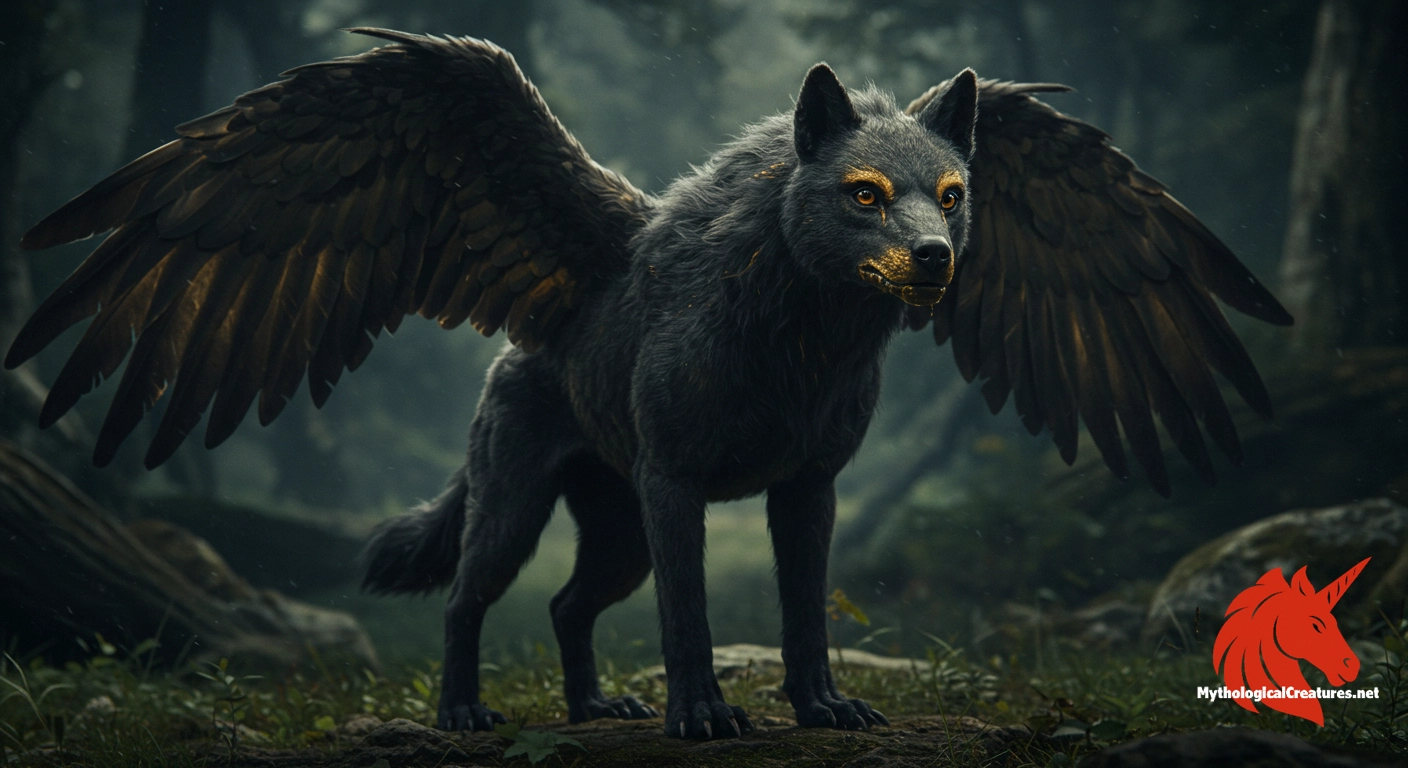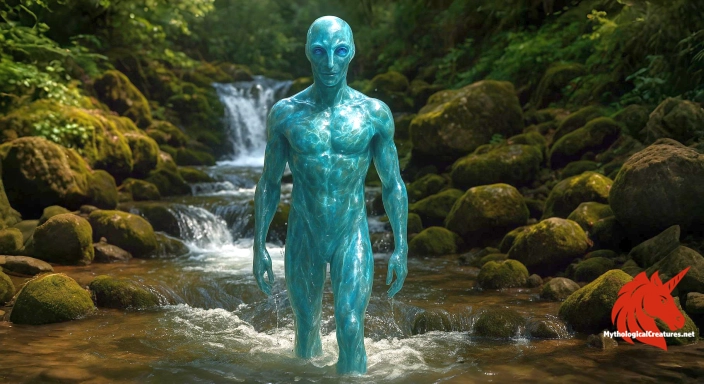Q'ursha: Q'ursha is a legendary dog from Georgian mythology, best known as the loyal companion of the culture hero Amirani.

Q'ursha
Q'ursha - Q'ursha symbolizes loyalty and is celebrated in Georgian folklore, with his legendary abilities and distinctive appearance making him a cultural icon.
Origins & First Encounters
Q'ursha emerges as one of the most memorable creatures in Georgian lore, a mythic canine whose very presence enlivens the tapestry of ancient storytelling. Born of extraordinary circumstances—sometimes from a raven, other times from an eagle—he embodies both the fierce spirit of the sky and the humble nobility of the earth. His close association with the culture hero Amirani places him at the heart of legendary quests and heroic sagas. The creature’s very name, meaning 'black-ear', highlights a rustic familiarity that resonates with the local populace. Stories of his loyalty, strength, and almost supernatural abilities have been passed down through generations. Deeply embedded in Georgia's cultural consciousness, Q'ursha represents the ideal of steadfast companionship and the extraordinary potential hidden within nature. His tale is richly interwoven with the myths and folklore of the Caucasus region, lending him an almost immortal legacy among folk heroes. The enduring appeal of his legend underscores a tradition where myth and moral virtue are seamlessly intertwined. Through his myriad adventures, Q'ursha continues to captivate both the hearts and imaginations of those who cherish Georgian myth.
Source Texts & Tale Variants
The legend of Q'ursha has been preserved through an array of ancient texts, oral traditions, and folk songs that have echoed through Georgian history. His story is most vividly captured in the popular folk song 'O my Kursha!', a composition that has been retold in at least twenty-seven distinct versions over the centuries. This song, celebrated and reimagined by bards and minstrels, reflects the deep cultural attachment to the noble creature. The enduring verses of the song have been interlaced with the heroic deeds of Amirani, with Q'ursha always standing as a symbol of unswerving loyalty. Creative storytellers have adapted his myth to reflect the shifting values and experiences of their times, ensuring that his tale remains a living part of Georgian folklore. In various recitations, subtle shifts in narrative details have further enriched his character, lending depth and complexity to his mythological persona. The recurrence of his image in poetry, song, and even dramatic performances testifies to the versatility of his legend. Each variant contributes to a richer, textured understanding of his character, making Q'ursha a perennial favourite in cultural retellings. His presence in these diverse sources cements his status as an enduring emblem of myth and memory.
Form & Powers
Q'ursha is depicted as an awe-inspiring creature whose physical form melds the natural with the supernatural. His colossal paws suggest a power that borders on the titanic, while his lips of gold lend him an otherworldly allure that captivates the imagination. The description of his eyes, described as being as big as sieves, gives him a penetrating and visionary gaze that seems to perceive the unseen. In some portrayals, he is blessed with majestic eagle wings, a gift attributed to his extraordinary parentage, which allows him to soar effortlessly across vast expanses. His wings not only symbolise his celestial origins but also enhance his status as a creature of mythic dimensions. The thunderous quality of his bark adds to his persona as one whose voice can command nature itself, reinforcing the impression of a creature both mighty and mystical. Each physical attribute, from his impressive leaps to his radiant presence, intertwines to create a being that is as formidable in form as he is in spirit. The variability in his depictions—ranging from the raw power of his paws to the delicate brilliance of his golden lips—reflects a deeper narrative of transformation and duality. Through these descriptions, Q'ursha stands as a vibrant embodiment of the wild and the wondrous.
Regional Faces
While firmly rooted in Georgian mythology, the tale of Q'ursha has undergone regional adaptations that add layers of nuance and local flavour. In various parts of the Caucasus, the myth is recounted with subtle differences that illuminate the unique cultural landscapes of each community. Some narratives place a stronger emphasis on his celestial origins, attributing even more divine qualities to his birth from a raven or eagle. In these regional variants, his eagle wings are often portrayed as symbols of freedom and transcendence, reflecting local ideals of harmony between man and nature. Other retellings highlight his role as not just a loyal companion but also as a guardian spirit, whose presence embodies the protective essence of the local wilderness. The adaptability of his lore has allowed artists and storytellers in different regions to imprint their societal values and environmental influences onto his character. Though the specifics may vary, the central themes of loyalty, strength, and supernatural ability consistently resonate across these diverse accounts. Such regional distinctions serve to enrich his myth, weaving localized interpretations with a broader, unifying narrative. Despite these variations, the core of Q'ursha’s legend remains a testament to the universal appeal of mythic guardianship.
Cultural Parallels
The figure of Q'ursha invites fascinating comparisons with mythical canines from other cultures, underscoring a shared human fascination with loyal, supernatural animal companions. His portrayal bears resemblance to legendary hounds like the Norse Garmr and the Celtic Cù-Sìth, all of whom serve as protectors and harbingers within their respective mythologies. Much like these storied creatures, Q'ursha embodies the dual nature of ferocity and fidelity, elements that have long captivated storytellers and audiences alike. His supernatural abilities and his close relationship with a heroic figure mirror archetypal motifs found in myths worldwide. The depiction of loyal animals as both guides and guardians is a recurring theme in many cultures, signalling an enduring archetype. Beyond the realm of individual legends, such comparisons highlight the universal symbolism of the canine spirit as one of trust, courage, and the bridging of the mortal with the divine. These cross-cultural parallels enrich the myth of Q'ursha, positioning him as part of a global narrative tradition. By aligning his characteristics with those found in other mythological traditions, one can discern a shared reverence for animals imbued with almost sacred qualities. This comparative lens illuminates how similar symbols arise independently to connect communities with their cultural and natural environments.
Legacy & Modern Evolution
The legacy of Q'ursha has evolved dramatically from its ancient origins to its prominent role in modern cultural identity. Over the centuries, his myth has absorbed layers of historical transformation, reflecting both the ancient aspirations and contemporary sensibilities of Georgian society. Early ballads and oral traditions painted him as a formidable companion endowed with supernatural traits, traits that have endured even as his story has adapted over time. In modern artistic expressions, whether in literature, visual arts, or digital media, Q'ursha continues to represent ideals of loyalty, strength, and the bridging of the mystical with the everyday. His image has come to symbolise national pride and the timeless spirit of Georgian folklore, inspiring creatives to explore fresh interpretations of his myth. Contemporary retellings often imbue him with an additional layer of cultural symbolism, presenting him as a beacon of resilience in a rapidly changing world. His enduring appeal demonstrates the power of myth to evolve while remaining deeply rooted in communal memory. As modern audiences rediscover and reinterpret his legend, Q'ursha stands not just as a relic of ancient story but as a dynamic emblem of cultural continuity and transformation. His historical evolution mirrors the journey of a society that honours its traditions even as it strides confidently into the future.
Interesting Fact
The legend of Q'ursha is so ingrained in Georgian culture that over 27 different versions of the folk song praising him have been documented.
Quick Creature Info
Features:
Our Mythic Legendary Rating:

Also Sometimes Known As:
Habitat:
Supernatural Powers:
Physical Attributes:
Abilities:
Behavior:
Lore:
References
Discover Another Mythical Legend You May Not Have Heard Of?
Uncover the mysteries of ancient folklore and expand your knowledge of legendary beings from cultures around the world.
Dare to Meet the Aban....
Mythical Disclaimer: The images and data on this site are derived from various historical and literary sources, but we have found that many myths often have multiple versions and interpretations across references, sometimes contradictory. As a result, these creature depictions are artistic interpretations—imaginative blends of folklore, legend, and a dash of AI guesswork. Because creature descriptions vary widely, our illustrations and accompanying information represent our best effort to honor mythology while bridging creative gaps. Enjoy these interpretations—just remember, we've done our best to respect the stories and validate available data, but in the realm of mythology, details often shift, imagination leads the way, and nothing is ever set in stone!
Curated by the Mythological Creatures Team (rev. May 2025)
